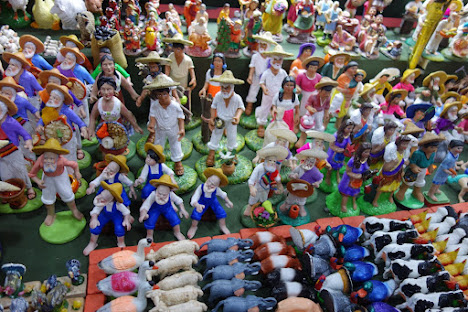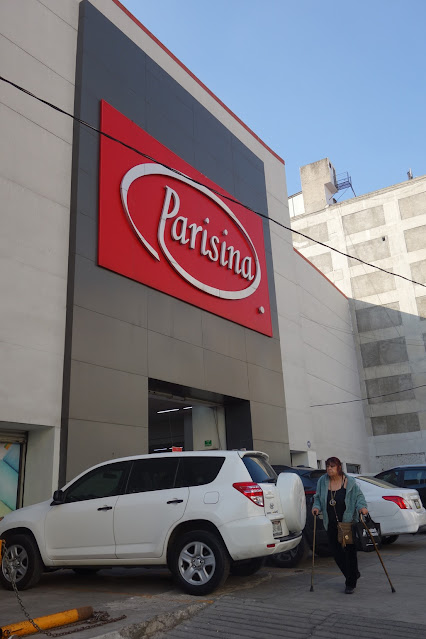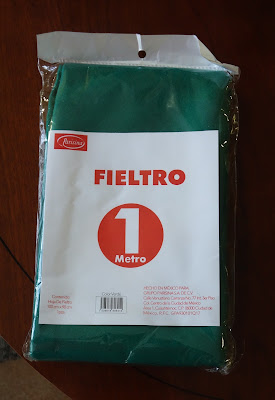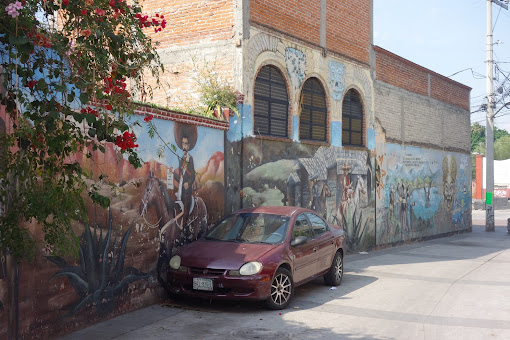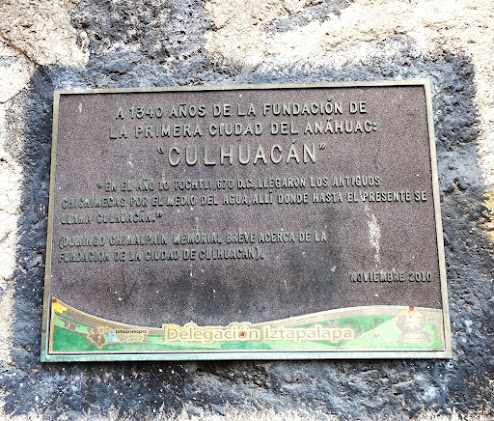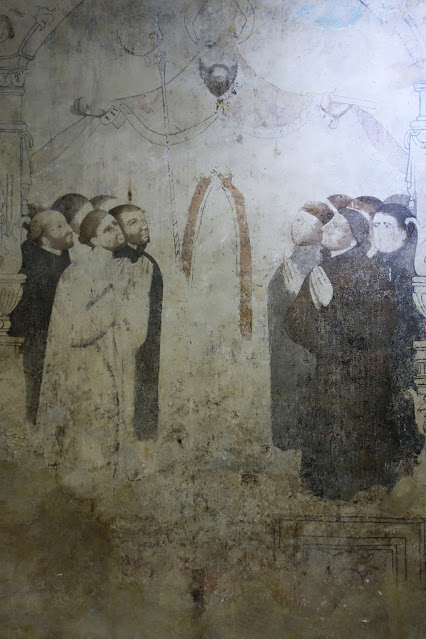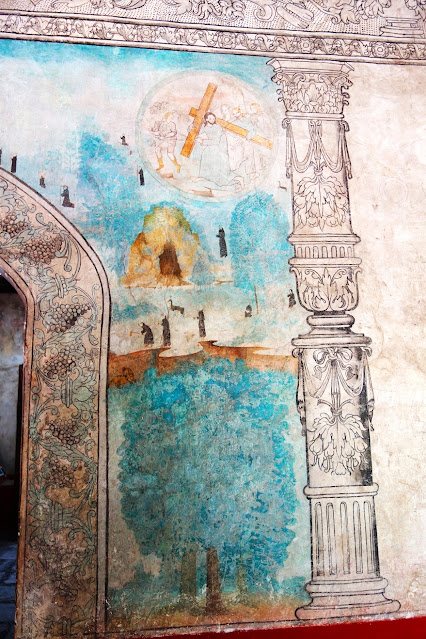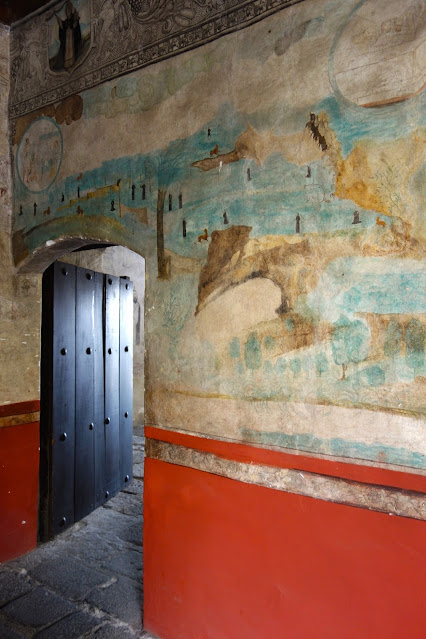It is always interesting to visit Mexico City's Jamaica Market, but the best times to see it are in the weeks leading up to Day of the Dead and during the Christmas season.
When I go to Jamaica, I usually stop first at one of the restaurants within the market building... Carnitas Paty.
I ordered my usual... two pork tacos and a glass of "tepache", a beverage made of slightly fermented pineapple. I had a seat right in front of the guy chopping the pork (the one with the mask on). He put on quite a show, wildly chopping to keep up with the orders. That front row seat might not appeal to the squeamish. I always order "maciza", the cuts of pork that we are used to. However, carnitas aficionados would tell you that is the least tasty part of the pig. You can also order skin, stomach, ears, tongue or snout. If you are sitting by the chopping block you can immediately recognize the pigs' noses right in front of you.
I wanted to buy some more decorations for my (artificial) Christmas tree. Since it is one of those skinny trees, I needed small ornaments. Most of the stalls were selling plastic ornaments from China. Finally I found one shop that sold glass "esferas" (that's they call the Christmas tree bulbs) that were made in Chignahuapan, a town famous for its Christmas decorations. The vendor had five designs of small bulbs, and I bought a mixture of two dozen. Later I found another stall with "esferas" made by Indimex, a company based right here in Mexico City that makes blown glass ornaments. So bought another dozen of small bulbs. I like a tree that is really full of ornaments, and I wasn't satisfied with the tree last year. These purchases should do the trick!








